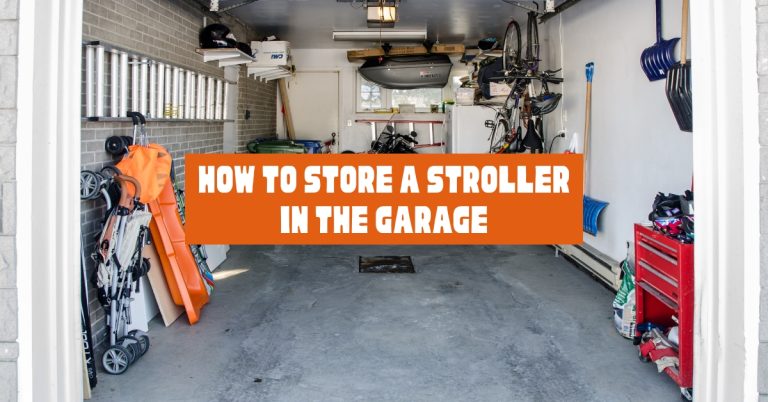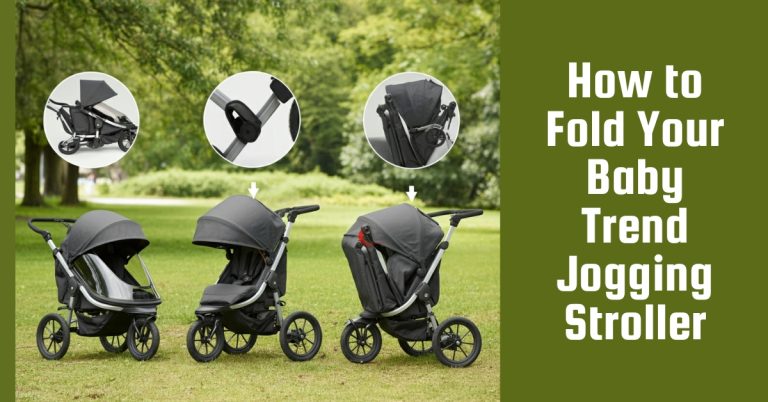As an Amazon Associate, I earn from qualifying purchases.
Taking your baby out for a walk in the stroller during winter can be refreshing—for both of you. But it’s crucial to ensure your little one stays warm and safe from the cold. Babies can’t regulate their body temperature like adults, and exposure to cold air for too long may lead to discomfort or even health issues.
In this guide, you’ll discover smart, practical, and safe ways to keep your baby warm in a stroller during cold weather walks—without the risk of overheating or unsafe layering.
Contents
Why It’s Important to Keep Your Baby Warm in a Stroller
Babies are far more sensitive to temperature changes than adults. Their bodies are still developing, which makes them vulnerable to both cold and heat. Here’s a more detailed look at why stroller warmth is so important during winter outings:
- Rapid Heat Loss: Babies have a larger surface area relative to their body weight, causing them to lose heat more quickly. Their heads, hands, and feet are especially prone to cooling rapidly in cold air. Even short periods of exposure can lower their body temperature significantly.
- Immature Thermoregulation: Unlike adults, babies don’t have a fully developed internal temperature control system. They are slower to warm up when cold and can’t easily signal discomfort. Their shivering response is also not as strong, so you can’t rely on typical signs to know they’re cold.
- Risk of Illness: When a baby’s body temperature drops, their immune system weakens, making them more prone to catching colds, respiratory infections, and even hypothermia in extreme cases. Prolonged exposure to cold weather without proper protection increases the likelihood of sickness.
- Comfort and Calmness: Babies are generally more peaceful and content when they feel warm and secure. A cold baby may cry, fuss, or struggle to fall asleep during a walk. Maintaining an ideal level of warmth helps them stay calm, enjoy the ride, or even take a soothing nap.
- Sleep and Growth: Consistent warmth supports better sleep during walks, and quality rest is vital for your baby’s development. A warm, snuggly stroller environment mimics the cozy feeling of being held, making outdoor naps more likely.
To sum up: keeping your baby warm during winter strolls is about more than just comfort—it’s about protecting their health, supporting their development, and creating a calm, enjoyable experience. Achieving this safely means dressing them in breathable, layered clothing and using stroller accessories designed for cold weather.
How to Keep Baby Warm in a Stroller (Step-by-Step)
Keeping your baby warm during cold-weather walks involves more than just piling on clothing. Follow these actionable steps to ensure warmth, comfort, and safety:
1. Dress in Breathable, Layered Clothing
Layering traps heat effectively and lets you adjust based on temperature changes. Always use breathable fabrics to avoid overheating.
- Base layer: Start with a cotton or moisture-wicking bodysuit or onesie. This layer keeps sweat away from the skin and prevents chills.
- Middle layer: Add a fleece-lined romper, wool sweater, or thick cotton outfit. This insulates body heat and helps regulate temperature.
- Outer layer: For freezing temperatures, a windproof snowsuit or insulated bunting bag provides full-body coverage. Choose versions with fold-over mitts and feet for added warmth.
Pro Tip: Avoid overdressing. If you feel warm with one jacket, your baby likely only needs one more layer than you.
2. Use a Stroller Footmuff or Bunting Bag
Footmuffs are designed specifically for stroller use and are safer than loose blankets.
- What it is: An insulated, zip-up cocoon that lines the stroller seat and covers the baby from neck to toe.
- Why it helps: It blocks wind, insulates the lower body, and stays securely in place—unlike blankets that can fall off.
- How to choose: Look for waterproof or weatherproof models with fleece or wool interiors. Some footmuffs are universal, while others are stroller-brand-specific.
3. Shield Against Wind, Rain, or Snow
Protecting your baby from harsh weather elements is crucial, even if they are well-dressed.
- Stroller weather shields: Transparent, breathable covers that enclose the stroller, trapping warmth while still allowing airflow.
- Fit tips: Make sure the shield doesn’t press against the baby’s face or create a seal that traps heat dangerously. It should be snug around the frame but loose near the baby’s upper body.
Avoid using scarves or heavy blankets over the stroller opening—they may restrict airflow and cause overheating.
4. Cover Sensitive Areas Properly
Babies lose the most heat from exposed skin, especially the head, hands, and feet.
- Head: Use a soft, lined hat that covers the ears but doesn’t ride up. A chin strap helps keep it in place without being too tight.
- Hands: Mittens are essential as babies often keep their hands still, which makes them colder faster. Choose insulated, fleece-lined pairs.
- Feet: Use wool socks or thermal booties over footed pajamas. For longer walks, insulated boots or fleece-lined footies add extra warmth.
Safety Tip: Avoid anything with tight elastic or rough seams that can leave marks or cause discomfort.
5. Monitor Body Warmth During the Walk
Don’t judge your baby’s warmth by their hands or cheeks—they often feel cool even when the baby is warm enough.
- What to check: Gently touch the back of the baby’s neck, upper back, or chest. If it feels warm and dry, they’re fine. If it feels cold or damp, adjust layers accordingly.
- Signs to watch: Fussiness, pale skin, or lethargy may indicate your baby is cold. Sweating or flushed cheeks could mean overheating.
- Adjust as needed: You can open the stroller cover slightly or remove a hat if the baby seems too warm mid-walk.
Reminder: Limit outdoor walks to 15–30 minutes in temperatures close to freezing, and return indoors if wind chill is high.
Best Winter Accessories for Stroller Warmth
Invest in some of these baby-safe accessories to make your winter walks safer and more comfortable:
- Footmuffs or sleeping bags: Made for strollers, they offer cocoon-like insulation without the risks of loose blankets.
- Weather shields or rain covers: These create a mini-environment inside the stroller, protecting from wind, snow, and light rain.
- Stroller thermal blankets: Preferably fleece or wool, always placed securely and never covering the face.
- Hats and mittens: Go for breathable, warm, and snug-fitting items with chin straps or secure cuffs.
- Stroller liners: These are insulated seat pads that add comfort and a layer of warmth beneath the baby.
Always ensure these accessories are designed for infants and come from trusted baby care brands.
Safety Tips for Cold Weather Strolling
Warmth alone isn’t enough—safety is essential for winter strolls:
- Remove bulky layers before using a car seat: After your walk, if transitioning to a car seat, remove the snowsuit or bunting for a proper harness fit.
- Avoid full blanket coverage over the stroller: It may trap too much heat and reduce airflow. Instead, use weather shields.
- Don’t take long walks in extreme cold: Wind chill, snow, and temperatures below 32°F (0°C) can be unsafe for young babies.
- Dress yourself appropriately too: Your comfort can be a good indicator of your baby’s.
- Stick to well-lit or familiar paths: Winter days are shorter, so safety and visibility should be a priority.
Conclusion
Strolling with your baby during winter can be a peaceful experience when you prioritize warmth and safety. Choose breathable layers, reliable accessories, and stay alert to your baby’s comfort level. Avoid extreme temperatures, and always be ready to return indoors if your baby shows signs of discomfort.
Smart preparation ensures both you and your baby enjoy the winter season in comfort and health.
Frequently Asked Questions
1. Can I use a blanket to keep my baby warm in a stroller?
Yes, as long as it’s breathable and securely tucked. Avoid covering the baby’s face and always ensure good airflow.
2. What temperature is too cold for a stroller walk?
Generally, it’s best to avoid walks below freezing (32°F/0°C), especially with wind. If it feels uncomfortably cold to you, it’s likely too cold for your baby.
3. Are footmuffs safe for newborns?
Yes, if designed for infant use. Look for adjustable, well-insulated, and breathable options.
4. How do I know if my baby is too hot or too cold in the stroller?
Touch the back of their neck or chest. If cool, add a layer. If sweaty, remove one. Cold hands and feet alone are not always signs of underdressing.
5. What’s the best material for stroller blankets in winter?
Fleece and wool are top choices for insulation and breathability. Avoid heavy, non-breathable synthetic materials that may trap moisture.
As an Amazon Associate, I earn from qualifying purchases.


